The Hermès brand has been known worldwide for its impressive attention to detail and its legendary craftsmanship, not only using traditional hand-stitching techniques, but also using high-quality materials to produce its exclusive handbags, as well as its small accessories. Among Hermès luxurious materials, the skins come in first place as the most exclusive components of these bags, from refined calfskin options to impressive exotic skins, their quality and beauty is unparalleled.
If you’re planning on buying your next Hermès handbag, and you want to discover your skin choices, we want to show you a detailed guide to the luxurious Hermès skins, so you can choose the ones that best suit your preferences and the ones that will certainly duplicate their value over time.
Don’t miss out and discover the beautiful materials that Hermès has for you!
- Calfskin
- Togo leather
- Epsom leather
- Clemence leather
- Swift leather
- Barenia leather
- Barenia Faubourg leather
- Box Calf leather
- Evercolor leather
- Fjord leather
- Maurice leather
- Novillo leather
- Negonda leather
- Veau Madame leather
- Graine Monsieur leather
- Country leather
- Vache Trekking leather
- Sikkim leather
- Veau Jonathan leather
- Butler leather
- Tadelakt leather
- Chamonix leather
- Evercalf leather
- Derma leather
- Sombrero leather
- Troika leather
- Grizzly leather
- Vache Liegge Leather
- Buffalo
- Buffalo Gala leather
- Buffalo Sindhu leather
- Buffalo Dalmatien leather
- Buffalo Pondicherry leather
- Goatskin
- Chèvre Mysore
- Chèvre Coromandel Leather
- Vibrato Leather
- Crocodile
- Crocodile Niloticus
- Crocodile Porosus
- Alligator Mississippiensis
- Ostrich
- Lizard
- Lizard Varanus Niloticus
- Lizard Varanus Salvator
Calfskin
Calfskin is the most common material used in the crafting of the Hermès handbags, and also on most of its leather small accessories. Hermès calfskin is sourced from reputable suppliers distributed throughout the world. These skins show the best of qualities and they are unique in their own way, some are naturally grained while others are pressured-grained. Here are the most used calfskin in the creation of Hermès bags.
Togo
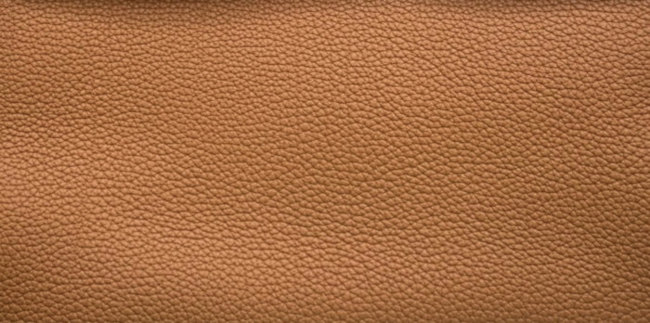
Ever since its debut in 1997, Togo leather has gained fame as one of Hermès’ standout materials. People love it because it’s soft, has a natural pebbled texture, and can take a lot of wear and tear. This sought-after leather got its name from the Togolese Republic in Africa and has been used to craft some of Hermès’ most iconic handbags and small leather goods.
You can spot Togo leather by its three main features: a gentle and flexible feel, a matte finish, and a unique pebbled texture with natural veins and wrinkles. These little imperfections add to its charm. As you use it, the leather may even develop a slight shine in some spots.
Epsom
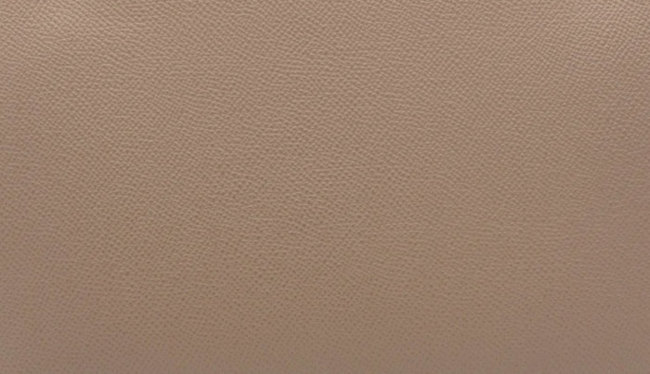
Epsom leather stands as one of Hermès’ toughest materials. It’s renowned for its remarkable strength and ability to showcase vibrant colors with unmatched brilliance. Back in 2004, it was introduced to take the place of Courchevel leather, which is no longer in production. Epsom leather has its own distinct personality, featuring a stiff texture, a semi-matte appearance, and an intricate cross-hatch grain that’s been carefully pressed to ensure long-lasting durability.
This robust leather is a popular choice for handbags, wallets, and small leather goods due to its incredible durability and firmness. When trying to spot a bag made from Epsom leather, keep an eye out for three main characteristics: a sturdy feel, a semi-matte finish, and a finely-pressed cross-hatch pattern.
Clemence leather
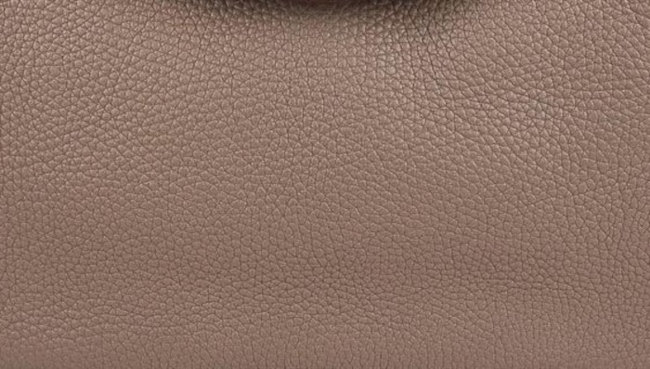
Clemence leather, introduced in 1992, often gets mistaken for Togo leather due to their remarkable similarities. It has gained popularity for crafting Hermès handbags because of its soft texture, semi-matte finish, and an irregular pebbled grain.
What sets Clemence apart from Togo is its wider and flatter grain without any veining. With time, Clemence leather becomes even more supple and may develop a subtle sheen from wear.
Swift leather
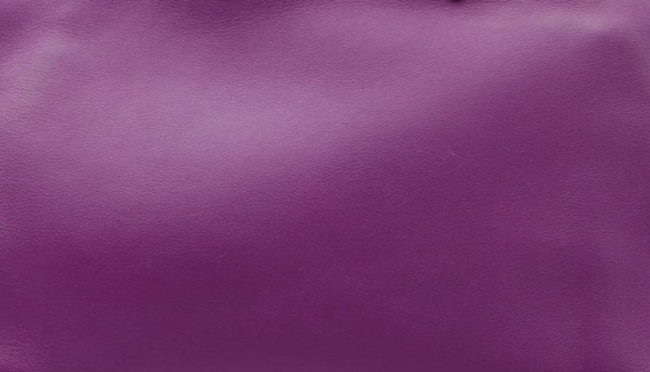
Devoted Hermès admirers hold a special fondness for Swift leather, not only for its exquisite appearance but also for its intriguing history. Named after the renowned author of “Gulliver’s Travels,” Jonathan Swift, this leather is frequently employed in crafting clutches, small leather items, as well as Birkin and Kelly handbags. Swift leather made its way into the Hermès collections in 2006, taking the place of the now-discontinued Gulliver leather.
What sets Swift leather apart are its gentle and sleek texture, a semi-matte finish, and a natural, unblemished grain. Given its plush softness, this leather type may display signs of wear more readily compared to others. As time passes, it generally becomes even softer and develops a subtle sheen.
Barenia leather
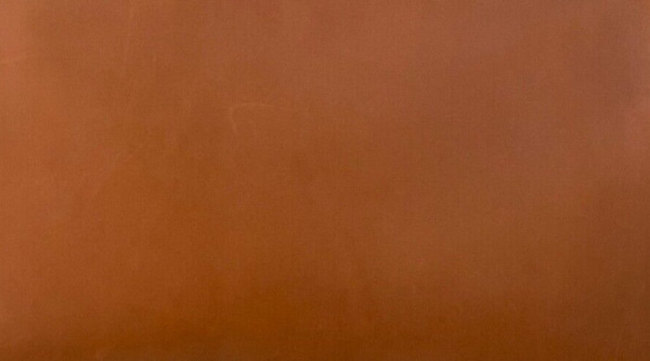
Hermès Barenia leather stands as a timeless and opulent material renowned for its lavish texture and the natural aging process that bestows it with character over the years. Originally introduced by Hermès in the 1970s, it is crafted from high-quality calf leather. In 2017, a new variation of this leather was unveiled by the atelier, christened as Barenia Faubourg in honor of the iconic Paris boutique Rue de Faubourg Saint-Honoré. Barenia Faubourg boasts a finer grain, enhancing its resilience compared to the original Barenia leather.
The hallmarks of Barenia leather encompass its sleek surface, along with its supple, velvety, and satin-like touch, though it should be noted that this quality renders it susceptible to scratches. Nevertheless, with the passage of time, the leather develops a warm and exquisite patina, each piece unique in its transformation.
Barenia Faubourg leather
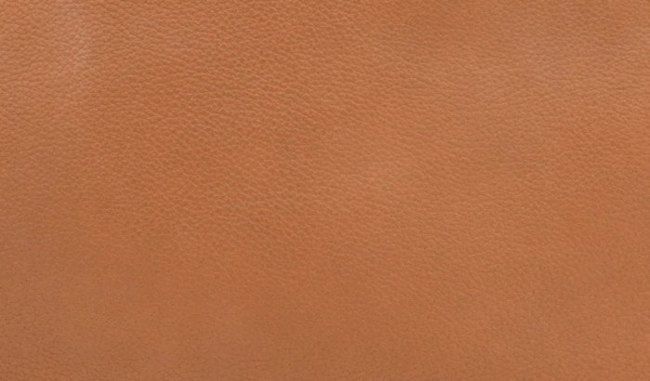
Hermès Barenia Faubourg leather emerged in 2017 as a modification of the original Barenia leather. This adaptation aimed to provide a textured and more resilient alternative to the original Barenia, which had been introduced in the 1970s but was susceptible to scratches and water damage.
Barenia Faubourg was meticulously crafted to preserve some of the classic Barenia’s attributes, including its lustrous finish, while infusing it with the durability akin to Togo leather, known for its pronounced grainy texture. This refined leather variation pays homage to the renowned Paris boutique Rue de Faubourg Saint-Honoré.
Box Calf leather
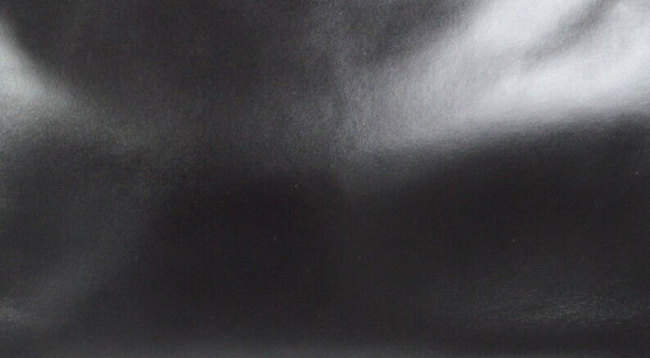
Box calf leather, renowned for its sleek and shiny appearance, boasts a polished finish that exudes elegance. Among the enduring Hermès leathers still in production, it traces its origins back to the 1890s and is named after Joseph Box, the skilled English shoemaker celebrated for crafting high-quality luxury footwear for London’s elite.
Box calf leather is characterized by its firm texture, subtle luster, and a surface adorned with a delicate “crackling” effect. Over time, as it ages and endures wear, this leather develops a luxurious patina. Although it may be susceptible to minor scratches, these imperfections can be readily rectified by a skilled artisan using a specialized polishing tool.
Evercolor leather
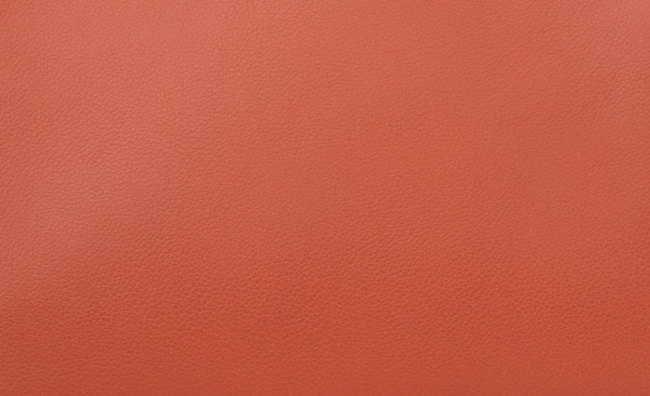
Evercolor leather joined the Hermès leather family in 2012, injecting a fresh vibrancy into the lineup. Distinguishing itself from its more mature siblings, Evercalf and Evergrain, Evercolor stands out thanks to its vibrant and diverse array of colors. In contrast to the predominantly neutral tones of its relatives, Evercolor offers a lavish spectrum of hues for your selection.
The leather itself boasts a supple and gentle texture, enhanced by a satin-like finish that exudes opulence. Its grain is meticulously uniform and compact, shaped through a precision printing process. This technique bolsters the leather’s durability, akin to the robustness of Epsom, while upholding a softer, more innate appearance. While some may draw visual parallels between Evercolor and Togo leather, it’s essential to note that Evercolor’s grain is artfully pressed rather than naturally occurring.
Fjord leather
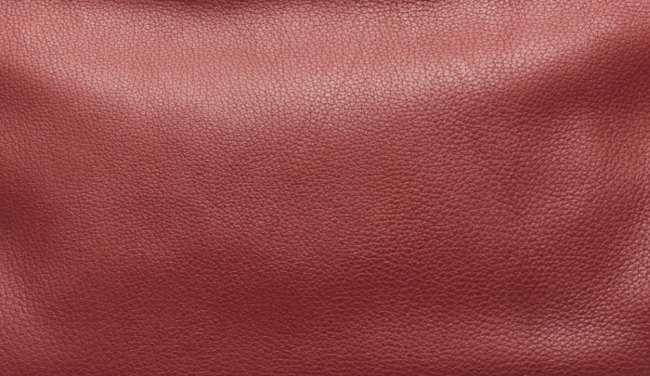
Hermès Fjord leather emerged as a natural-grained sensation in the 2000s. Crafted from the hides of young calves, this leather undergoes a vigorous drumming process to cultivate a distinctive raised grain effect. The outcome is a leather of remarkable softness and suppleness, graced with a durable and water-resistant character.
Fjord leather boasts a distinctive natural, pebbled texture that endows it with a one-of-a-kind allure, setting it apart from its leather counterparts. Its reputation for durability and capacity to maintain its form over time makes it a favored choice for various Hermès bags, especially the iconic Birkin and Kelly.
Maurice leather
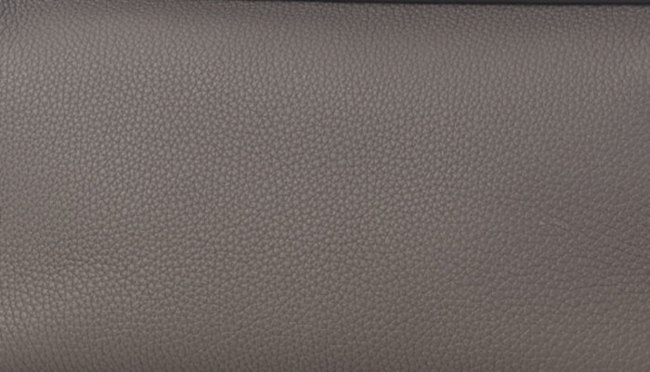
Introduced in 2017, Hermès Maurice leather stands out as a bull hide creation. While it shares some visual similarities with Clemence leather, Maurice boasts a smaller, well-defined grain pattern. Notably, it excels in retaining its shape over time, rendering it more resilient.
Maurice leather is celebrated for its toughness and structural integrity. However, with the passage of time, it gradually softens, developing an appealing patina. Typically, this leather is employed in crafting Evelyne, Picotin, and 24/24 handbags, rather than the iconic Birkin or Kelly models.
Novillo leather

In 2015, Hermès unveiled Novillo leather, a smooth-textured material adorned with petite grains known for exceptional color absorption. Novillo leather has drawn comparisons to Evercolor but stands out with its smaller grain size compared to Clemence or Togo leather. Notably, it offers a heightened level of scratch resistance, setting it apart from Epsom leather with its unstamped grains.
The preference for Novillo leather is evident in the creation of Birkin handbags. This skin is highly sought after for its lightweight durability, velvety touch, impressive color absorption, and superior scratch resistance. Novillo leather encapsulates the finest attributes of renowned leathers like Togo, Clemence, Epsom, and Evercolor.
Negonda leather
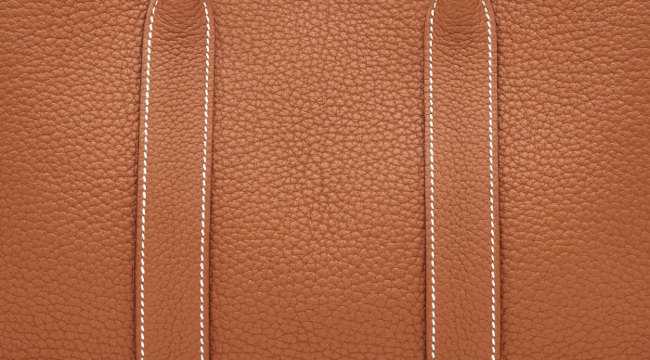
Negonda leather, employed in a range of Hermès bags and accessories, boasts a distinctive character. This leather’s one-of-a-kind texture is achieved through a process where hot iron stamps the surface, yielding a subtly raised grain pattern.
Durable, lightweight, and adorned with a slightly matte finish, Negonda leather made its debut in the late 1990s. While its origin remains shrouded in mystery, it is speculated to be named after a quaint Italian town.
Veau Madame leather
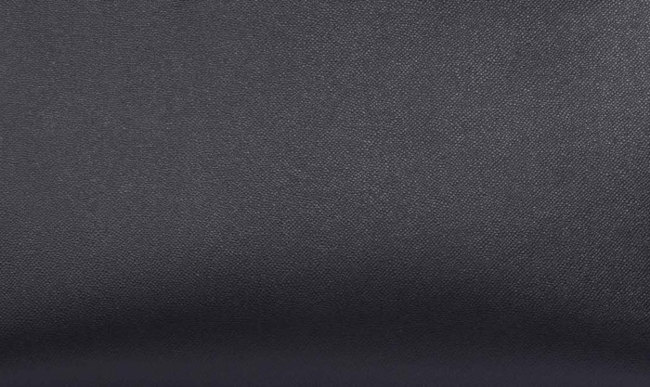
Hermès unveiled Veau Madame leather in the 1950s, a refined and smooth material derived from calf hide, earning it the nickname “Madame Calfskin.”
Veau Madame boasts a polished and sophisticated look, adorned with a subtle sheen that adds a touch of luxury to its texture. This leather is renowned for its durability and resistance to scratches, making it a preferred choice for crafting handbags and small leather goods.
Graine Monsieur leather
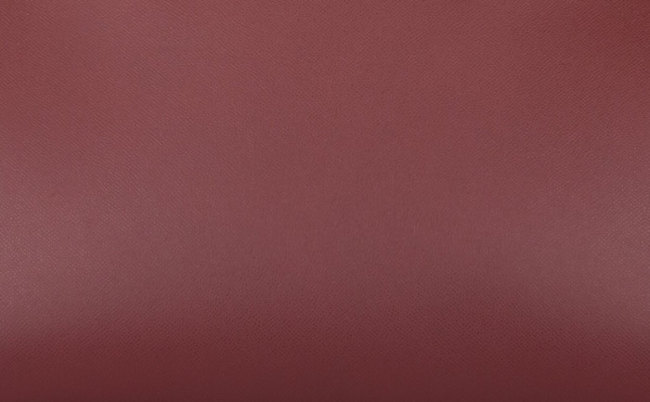
In 2018, Hermès introduced Veau Monsieur, also referred to simply as Monsieur leather. It showcases a refined grain pattern reminiscent of the classic Box Calf leather. Over time and with regular use, Monsieur leather acquires a subtle sheen and silky texture, elevating its sophistication.
A distinctive attribute of Monsieur leather is its inherent structural integrity, ensuring that it maintains its shape exceptionally well. This durable yet refined leather is frequently employed in crafting iconic Hermès handbags like the Kelly, Birkin, and Constance.
Country leather
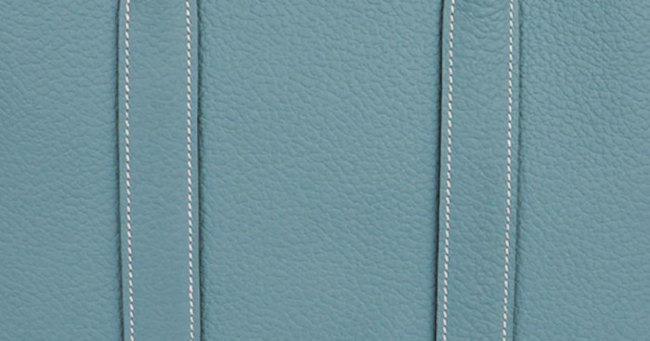
Inaugurated in 2012, Country leather represents a specially treated leather derived from female calf hides, celebrated for its robustness and lasting quality. Primarily employed in crafting the Garden Party series, this leather stands out for its distinctive texture, distinguished by its generous grain size.
For individuals in pursuit of a harmonious blend of fashion and practicality, Country leather emerges as a top pick, offering reliable defense against daily use and its associated wear and tear. Despite its relatively recent debut in the Hermès leather repertoire, it has swiftly captured the hearts of connoisseurs in the realm of luxury bags.
Vache Trekking leather
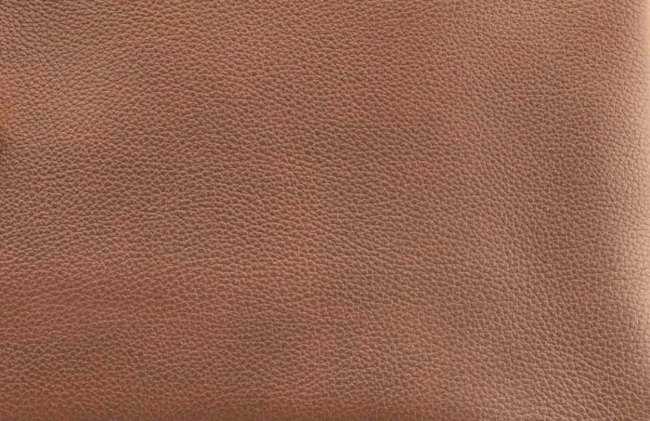
In 2009, Hermès unveiled an exclusive leather known as Bull Voyager Leather, crafted from meticulously processed male cattle hide. This leather boasts an exquisite embossing and features a distinct grain, available in a restricted color palette.
Given its scarcity, Hermès reserves Vache Trekking Leather for a limited selection of their bags. Luxury aficionados hold this material in high regard for its exceptional rarity and distinctive attributes. Should you encounter a Hermès bag fashioned from Vache Trekking Leather, you can be certain you’ve stumbled upon a genuine treasure.
Sikkim leather
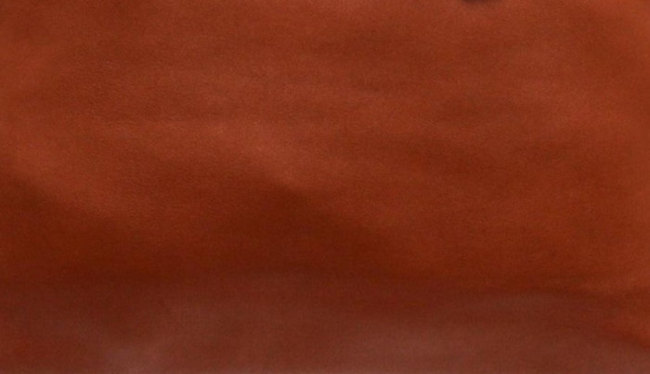
Hermès Sikkim leather, a refined variation introduced by Hermès in the late 1990s, offers a unique appeal with its smooth surface and near absence of visible grain, resulting in a gentle and velvety texture. This lightweight material is celebrated for its soft and flexible nature.
Nevertheless, it’s important to handle Sikkim leather handbags with care, as they are prone to scratches and blemishes if not properly maintained. Typically, Sikkim leather bags present a relaxed, slouchy appearance, reflecting the soft qualities of this distinctive leather.
Veau Jonathan leather
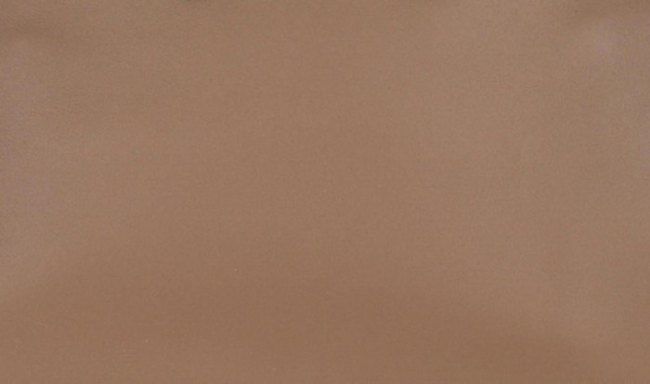
Veau Jonathan, unveiled in 2018, is a supple and featherweight leather reminiscent of Swift leather in several ways. Exhibiting a natural, understated grain and a matte finish, this leather variety finds frequent use in crafting small leather items and select handbags.
Its moniker pays homage to Jonathan Swift, renowned for his work “Gulliver’s Travels,” which served as inspiration for the naming of another Hermès leather, Swift leather.
Butler leather
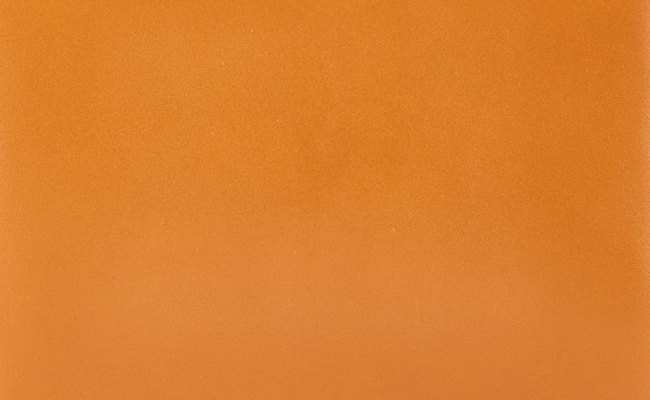
Debuting in 2013, Hermès introduced Butler leather, another variety of untreated and natural leather. While it shares some similarities with Barenia and Tadelakt leather, it distinguishes itself through its rarity and scarcity.
Over time, Butler leather acquires a patina, but it requires careful handling due to its susceptibility to scratches. Although most scratches can be polished out, diligent care is vital to preserve its allure.
Tadelakt leather
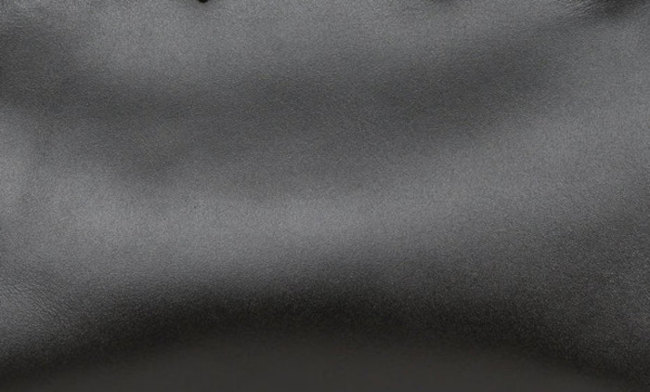
Hermès Tadelakt leather possesses a sleek and shiny appearance, often drawing comparisons to the popular Hermès Box Calf leather. It’s no wonder they can be mistaken for one another, given their shared characteristics, such as susceptibility to scratches and water-induced blistering. However, Tadelakt leather stands out due to its remarkable sheen and absence of visible grains.
This results in a silky texture, glossy surface, and excellent color absorption, making it a preferred choice for more formal handbags. While it may be likened to other Hermès leathers like Box Calf and Swift, it remains distinctive with its smooth texture and high gloss finish.
Chamonix leather
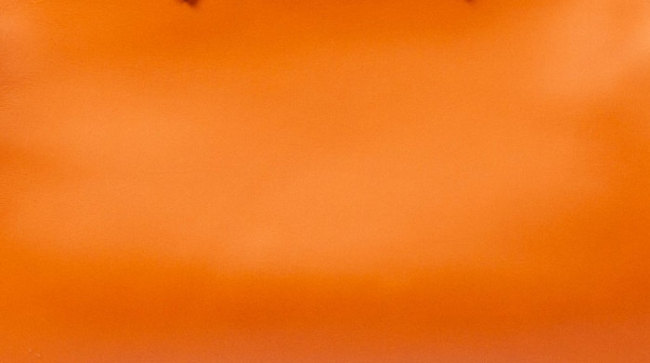
Hermès Chamonix leather, bearing the name of the picturesque French Alpine town, is derived from male calf hides and presents itself as the matte counterpart to Box Calf leather. It boasts a sleek, nearly plastic-like tactile quality and an understated, non-reflective surface.
Despite its robustness and resistance to scratches, it does not fare well with water exposure and is susceptible to marking. Interestingly, scratches on this leather can meld into the material, contributing to a vintage look, and can be effortlessly smoothed out. It is frequently employed in crafting handbags like the Birkin and Constance.
Evercalf leather
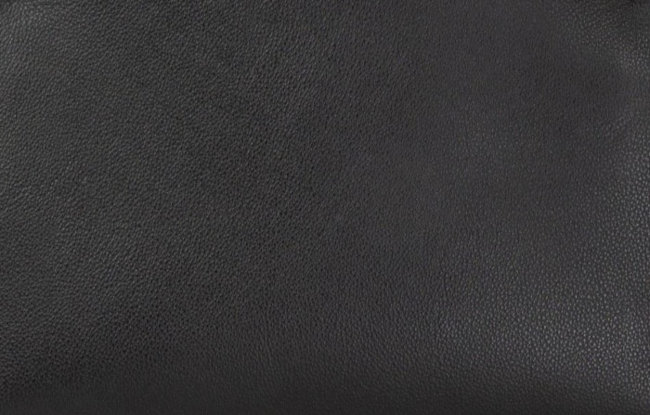
Hermès Evercalf leather is frequently mistaken for Box Calf leather due to their resembling looks. Nevertheless, there exist noteworthy distinctions that distinguish Evercalf from its counterpart. This leather boasts an exceptionally smooth and velvety texture, with a surface that leans toward a matte finish while still offering a subtle gleam.
In contrast to Box Calf, Evercalf is less prone to scuffing and scratching, rendering it a sturdier choice for daily wear. While both leather types enjoy popularity in the realm of Hermès bags, Evercalf often gains preference for its enhanced resilience and polished tactile quality.
Derma leather
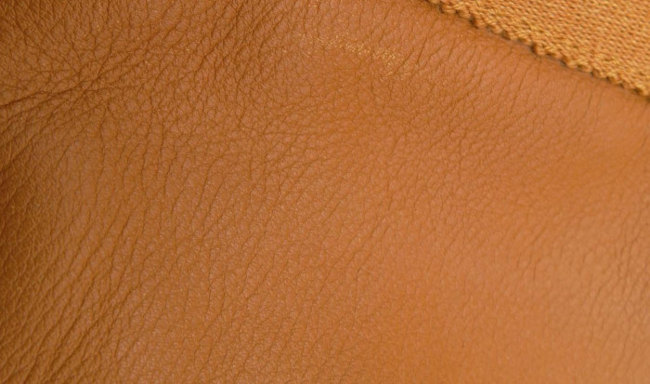
In 2004, Hermès unveiled Derma leather, a product of meticulously processed male calf hides that achieve an exceptionally smooth texture. This yields a gentle, non-glossy surface that offers a tactile delicacy.
In spite of its fragility, Derma leather exhibits remarkable pliability, allowing it to be fashioned into nearly any desired shape following the processing stage. This characteristic has made it a favored option for Hermès handbags, which demand a specific level of flexibility to preserve their structural integrity. Nevertheless, it’s imperative to recognize that, due to its delicate nature, Derma leather needs special care and attention to preserve its softness and matte appearance.
Sombrero leather
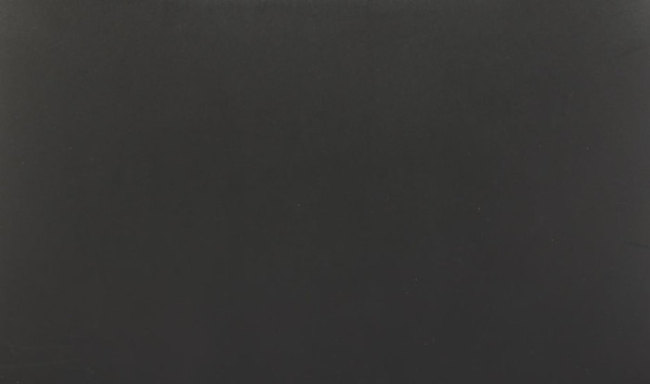
Hermès Sombrero leather, unveiled in 2011, is a gentle calf leather with a subdued matte appearance and a plush feel. It has gained popularity as a preferred material for Hermès structured handbags like the Kelly Sellier and the Constance.
While Sombrero leather is sturdy, it warrants careful handling due to its vulnerability to scratches. Nevertheless, its smooth, matte finish lends it a distinctive charm that distinguishes it from the array of Hermès leathers available.
Troika leather
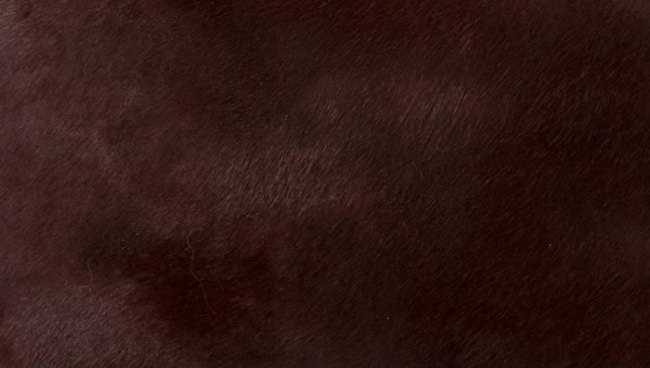
Hermès Troika leather is a truly unique find, boasting an unmistakable texture that sets it apart. It is enveloped in sleek, glossy calf hair, resulting in an exceptional tactile experience and distinctive appearance. This exceptional leather is often employed in conjunction with various other Hermès leather varieties.
Sourced from the hide of a young male calf, known as unborn calf leather, Hermès Troika leather is celebrated for its velvety texture and an opulent coat replete with shine. Given its rarity, this leather is reserved for only a select few bags across the globe, rendering it a prized material eagerly sought after by discerning collectors.
Grizzly leather
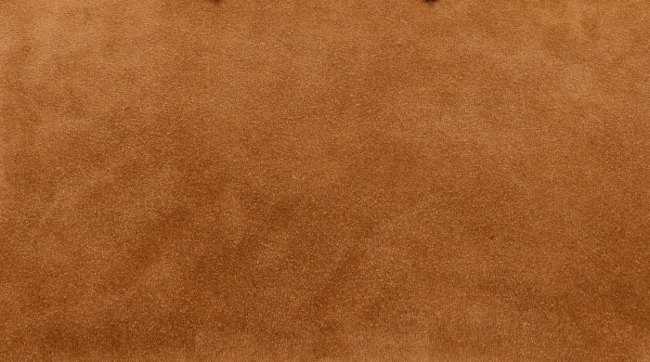
Hermès Grizzly, also known as Veau Doblis Suede, is a leather frequently employed in the crafting of the recent Grizzly Birkin model. It boasts a velvety texture, setting it apart from the Velvet leather, though subtle distinctions exist. Notably, Grizzly leather showcases a more luxuriant and bushier aspect compared to Velvet.
Veau Doblis Suede finds its application not only in Birkin bags but also in the creation of Hermès footwear and various small leather accessories. Distinguished by its velvety, plush texture and its pronounced bushy appearance, Grizzly is typically available in natural hues such as gold and gris Caillou, although on occasion, it can be encountered in more vibrant shades, such as bleu Thalassa.
Vache Liegge Leather
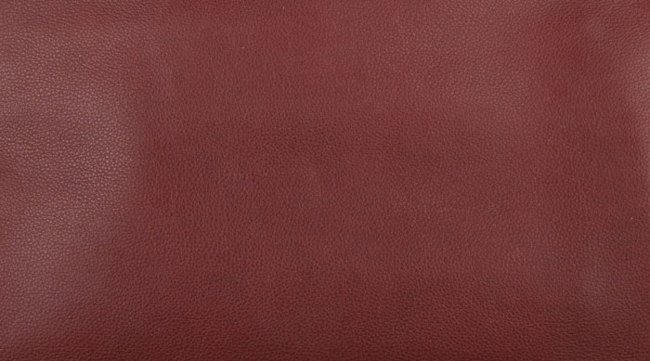
Hermès Vache Liegee leather stands as a beloved choice in the realm of Hermès collectors, cherished for its exceptional durability and remarkable ability to maintain its form over time. This leather stepped onto the scene in 2004, replacing the Ardennes leather, and swiftly garnered a dedicated following among Hermès aficionados.
The substantial thickness of Vache Liegee leather imparts a robust and unyielding quality, rendering it an ideal candidate for bags designed to endure the passage of decades. Yet, beneath this sturdiness, it retains a supple and inviting tactile quality, making it a joy to handle. Vache Liegee leather adorns itself in a spectrum of hues, and its inherent patina matures gracefully over time, enhancing the bag’s intrinsic beauty and individual character.
Buffalo
Hermès incorporates buffalo leather into a select range of their exclusive handbags. This leather is renowned for its exceptional durability, ensuring that these handbags stand the test of time.
Its surface boasts a distinct grainy texture, both smooth to the touch and effortless to clean with a simple swipe. What sets this leather apart is its propensity to develop unique hues and tones as it matures, enhancing its allure over the years. A prime example of buffalo leather’s utility can be found in Hermès’ Garden Party line, where its robustness is a perfect match for daily use.
It’s worth noting that Hermès employs various types of buffalo leather, each distinguished by its own characteristics and attributes. These distinctive buffalo leathers undergo unique processing methods, resulting in a diverse array of textures and finishes. In the following sections, we’ll introduce you to Hermès’ buffalo leather variants.
Buffalo Gala leather
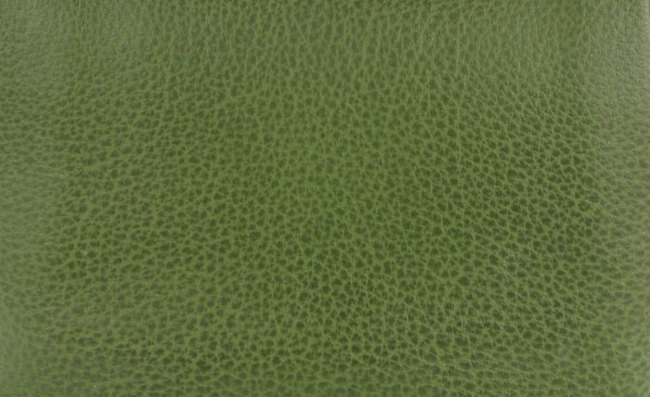
Hermès Gala Buffalo leather stands out as a supple and velvety material exclusively reserved for the most diminutive treasures in the Hermès lineup. Its distinct grain showcases an elegant pattern that seems to shimmer when bathed in direct light.
Within the realm of Hermès leathers, Buffalo Gala is counted among the more delicate options, demanding special attention for its pristine maintenance. Nevertheless, its gentle touch and visually captivating grain render it a perfect choice for adorning smaller Hermès accessories such as wallets and coin purses.
Compared to Buffalo Sindhu, this leather boasts a more refined grain and a lighter weight. Thanks to its unparalleled appearance, Buffalo Gala has become a coveted leather for connoisseurs of luxury and craftsmanship.
Buffalo Sindhu leather
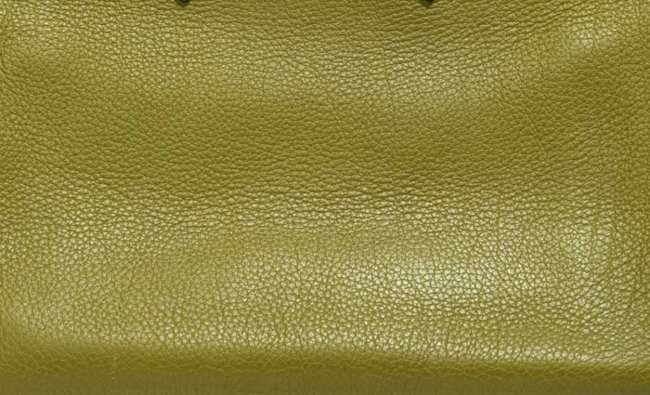
Hermès introduced Buffalo Sindhu leather in 2007, a robust heavyweight leather well-suited for daily wear due to its exceptional durability. It found exclusive use in the Green Party collection and is crafted from the hides of water buffaloes.
This leather’s individual grain size and distinctive coloration lend it a truly unique character. Its impressive resistance to scratches and marks makes it a preferred option for individuals who regularly rely on their Hermès bags. Its ability to withstand wear and retain its form renders it a dependable choice for many discerning customers.
Buffalo Dalmatien leather
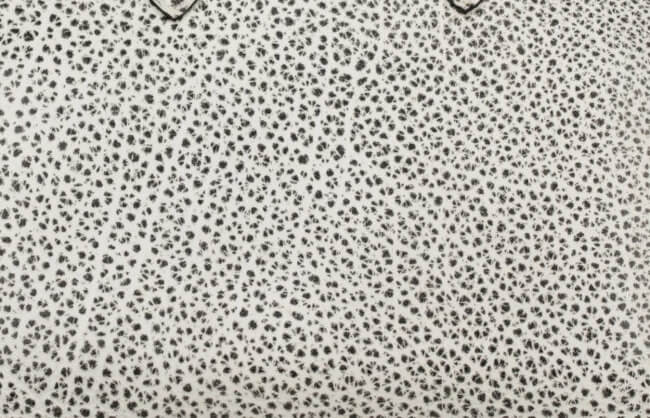
Buffalo Dalmatien, or Buffalo Skipper, stands as a rare and unique Hermès leather that is no longer in production. Its distinctiveness lies in the one-of-a-kind spotted pattern it displays, reminiscent of the markings of a Dalmatian dog. This unique appearance results from a dual dyeing process, causing pigments to concentrate towards the center of the grain.
Aside from its striking visual appeal, Buffalo Dalmatien leather is celebrated for its robustness and flexibility. The leather boasts a medium-sized grain with a raised texture, delivering a distinctive tactile sensation. Its resistance to scratches and water renders it exceptionally well-suited for daily use.
Buffalo Pondicherry leather

Hermès Buffalo Pondicherry leather, which made its debut in 2011, stands as a robust and resilient buffalo leather type. Its nomenclature pays homage to the city of Pondicherry in India, where skilled artisans employ natural dyes and waxes in the tanning process.
Characterized by a subtle grainy texture, Buffalo Pondicherry leather is celebrated for its capacity to endure scratches and repel water. It frequently finds its application in Hermès bags tailored for rigorous use and is identifiable by its distinctive texture and rugged allure.
Goatskin
Hermès goat leather stands out as a pliable and velvety material that commands admiration from fashion aficionados. Its cherished qualities include resilience, adaptability, and an opulent aesthetic appeal. Within the spectrum of Hermès leather offerings, goat leather is renowned for its versatility, finding application in diverse products spanning handbags, wallets, and even apparel.
Hermès boasts several variants of goatskin, each distinguished by its individual texture and attributes. In the following section, we will delve into the various iterations of Hermès goatskin.
Chèvre Mysore
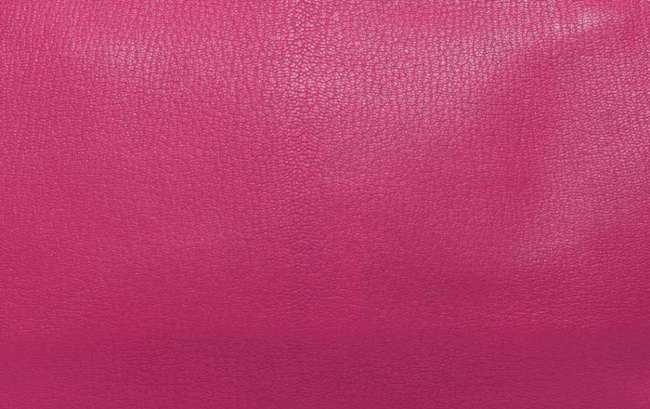
For countless years, Chèvre Mysore has remained a timeless leather selection within the Hermès repertoire. Unlike its counterparts, this exquisite material is derived from goatskin found in the Karnataka region of India, in proximity to the city of Mysore. Although its inception can be traced back to the 1990s, the exact year of its introduction remains elusive.
Chèvre Mysore is celebrated for its pliant yet dry tactile sensation, sporting a lustrous finish and an intricate, caviar-like grain. This leather exudes a remarkable “fresh” appearance and possesses exceptional robustness, rendering it a favored preference among devoted Hermès aficionados. Moreover, it enjoys renown for its ability to showcase an expansive spectrum of vivid hues.
Chèvre Coromandel Leather
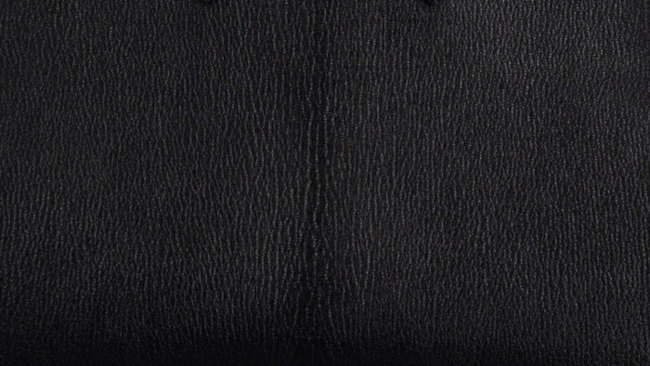
Chèvre Coromandel stands as a true gem among Hermès leathers, cherished for its singular attributes. This exceptional leather originates from male mountain goats, endowing it with a ruggedness and tenacity that distinguishes it from its counterparts. Its subtle graining and iridescent sheen contribute to its distinctive allure. The textured exterior renders it nearly impervious to scratches and imperfections, all the while retaining a gentle, tactile quality.
Renowned as one of the more exclusive options within the Hermès leather repertoire, Chèvre Coromandel ranks among the finest. Its lightweight yet robust nature renders it ideally suited for daily usage, while its polished finish exudes an aura of opulence.
Vibrato Leather
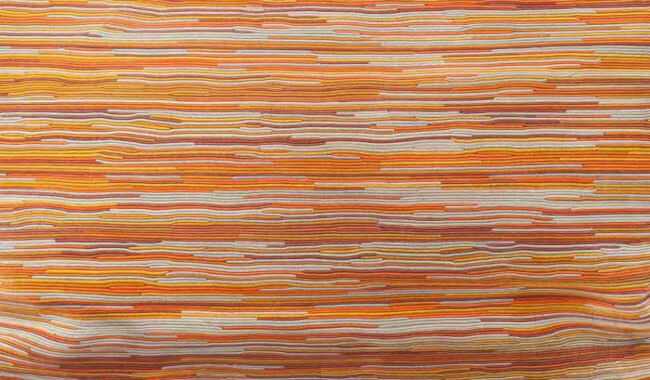
Hermès Vibrato leather embodies a distinctiveness rarely found elsewhere. It presents the illusion of finely woven fabric or canvas, yet, in truth, it is meticulously fashioned from interwoven strips of goatskin leather and suede. This exceptional crafting technique yields leather that is not only visually captivating but also undeniably distinctive.
The intricate weaving of these leather strips confers upon its unparalleled durability, making it an optimal choice for everyday wear, withstanding scratches and scuffs with ease. Yet, given its rarity and the unique artistry behind its creation, Vibrato leather occupies a prestigious position among the more exclusive offerings in the Hermès collection.
Crocodile
Hermès Crocodile leather is an epitome of opulence and desire. Its application in crafting iconic Hermès pieces like the Birkin and Kelly bags elevates them to a realm of unparalleled luxury.
The hallmark of Crocodile leather is its singular texture, characterized by small, meticulously uniform scales that together form a perfect pattern. Hermès employs various variations of crocodile leather, each endowed with distinct qualities.
Crocodile Niloticus
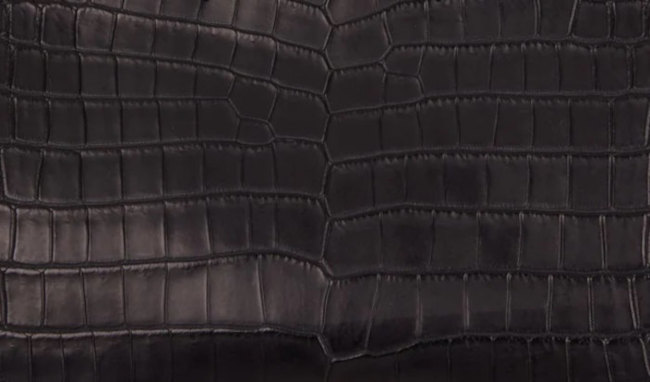
Crocodile Niloticus skin, an embodiment of luxury, serves as the illustrious foundation for Hermès’ most coveted and iconic handbags. Hailing from the shores of the Nile River in Zimbabwe, Africa, this leather is celebrated for its unique texture, distinguished by petite, square-shaped scales. The legacy of crocodile leather at Hermès dates back to the 1920s, bestowing upon it the honor of being one of the brand’s most venerable and cherished materials.
Crocodile Niloticus skin is offered in two distinct variations: a glossy (lisse) finish, adorned with a special glaze for a lustrous allure, and a matte counterpart, left in its natural state for a more organic aesthetic. Regardless of the chosen finish, crocodile leather remains synonymous with peerless durability and enduring appeal, rendering it an esteemed choice among customers and collectors alike.
Crocodile Porosus
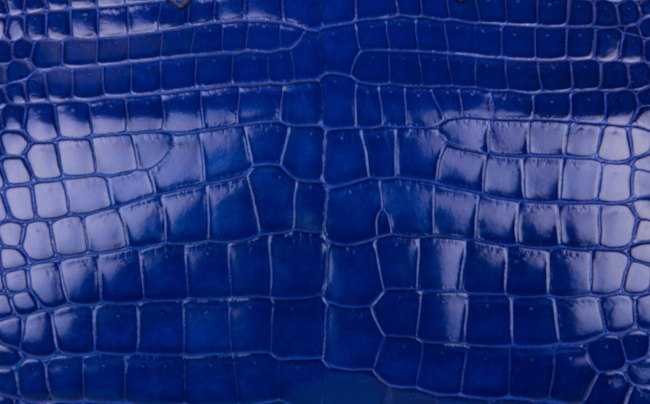
Hermès Crocodile Porosus leather stands as an epitome of opulence in the brand’s arsenal of materials. Crafted from the hides of saltwater crocodiles indigenous to the regions of Australia and Southeast Asia, this leather is known for its exceptional attributes. Its defining features include the generously proportioned, symmetrical scales, each graced with a distinctive central pore. Exhibiting remarkable longevity, the leather matures gracefully over time, imbuing itself with a resplendent patina.
Within the realm of Crocodile Porosus, there are two distinctive variations: the lustrous (lisse) variant, meticulously burnished to achieve a glossy sheen, and its matte counterpart, preserved in its natural state to exude authentic beauty.
Alligator Mississippiensis
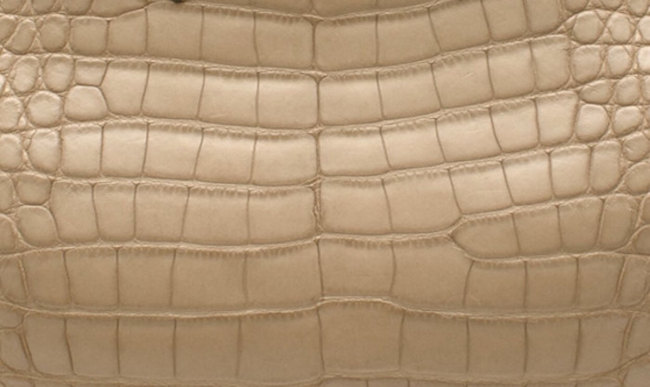
The Alligator Mississippiensis leather, sourced from the American alligator species native to the southern regions of the United States, exemplifies luxury with its opulent texture and enduring quality. Cherished by connoisseurs of high fashion, Hermès handbags crafted from this material captivate with their exotic vibe.
Distinguished from crocodile hides, Alligator Mississippiensis boasts a uniform, velvety surface that bestows an aura of refinement and precision. Its large, asymmetrical scales, characterized by their distinctive rectangular configuration, contribute to the bag’s captivating design, enhancing its innate elegance.
Ostrich
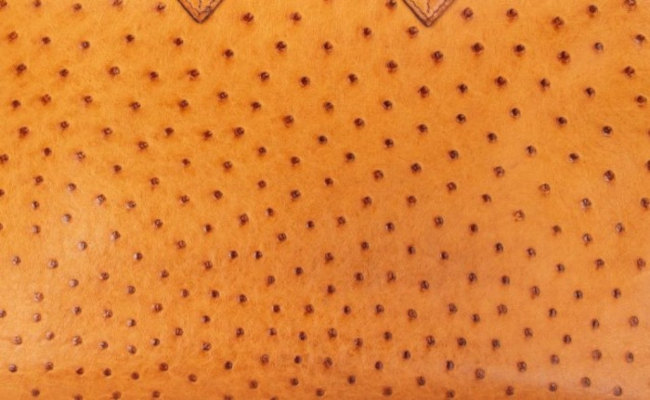
Hermès Ostrich skin is an opulent material cherished for crafting handbags, wallets, and various small leather goods, signifying luxury at its finest. What sets it apart is its distinctive polka dot motif, rendering it unmistakably unique. The leather combines sumptuous softness with remarkable durability, resisting the rigors of everyday use.
Sourced from the heart of South Africa, Ostrich skin bears the natural traces of feather plucking, granting it an unparalleled texture and character. This leather is renowned for its ability to embrace vibrant, profound hues, which can gracefully mature with time or lighten when exposed to the sun.
Lizard
Hermès Lizard skin is an exotic material that graces the creation of opulent handbags and accessories, epitomizing luxury in its purest form. The lizard’s skin boasts a finely textured surface with scales, imparting a sophisticated essence to every design.
There are various types of lizard skins at Hermès, each boasting its own distinctive traits and textures. These distinct lizard skins offer a versatile palette for a myriad of styles and designs. Next, we will show you the two main lizard skins employed by Hermès.
Lizard Varanus Niloticus
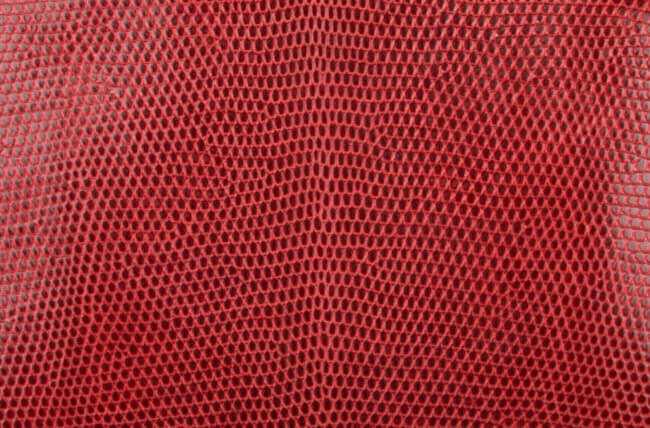
Hermès Nile Monitor Lizard skin, known as Lizard Varanus Niloticus, represents a distinctive exotic leather adorned with intricate, fine scales, crafting an unmistakable pattern. Sourced from the African Nile Monitor lizard inhabiting sub-Saharan Africa, this leather encapsulates a sense of rarity and luxury.
Distinguished by its petite, rounded scales arranged in a sequential manner, Lizard Varanus Niloticus exudes a delicate, textured grain and a lustrous finish. It often finds its purpose in crafting smaller accessories, including wallets, clutches, and petite handbags. However, it requires tender care, as it is susceptible to moisture due to its more delicate nature.
Lizard Varanus Salvator
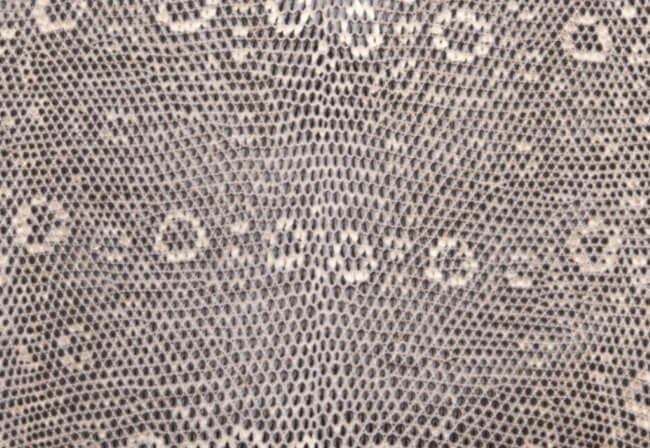
Hermès Salvator Lizard skin, referred to as Lizard Varanus Salvator, stands as an exotic leather marvelously embraced by the renowned luxury brand. This exquisite leather originates from the Salvator lizard, indigenous to Southeast Asia, creating a distinctively alluring material.
With its unique small, consecutive scales showcasing natural brown rings against beige scales, Lizard Varanus Salvator captivates with its glossy finish. However, in contrast to certain other exotic leathers, it possesses a more delicate texture. Over time, it may bear the marks of wear, as its scales can be susceptible to the effects of humidity and dry conditions.
So, what do you think of these luxurious and amazing Hermès skins?
All of these materials reflect the true marvel of Hermès craftsmanship and commitment to high-quality, offering its clients authentic art pieces that can be transformed into investments and family heirlooms.
If you’re ready to buy a new Hermès handbag, and you don’t want to lose your time on waiting lists at the official stores, we have the ideal solution for you. At The Birkin’s & Kelly’s House you will be able to find the Hermès bag that you’re looking for, in brand-new condition and with all the authenticity documents that you need to be 100% sure of your handbag’s genuineness.
Enter our online Hermès bag sale and find the right exclusive Hermès handbag, and if we don’t have it available, you can always order it and we will get it for you in no time.
Trust the luxury experts and buy a new Hermès handbag today!